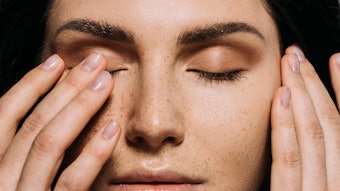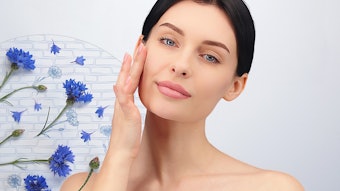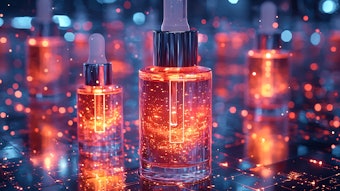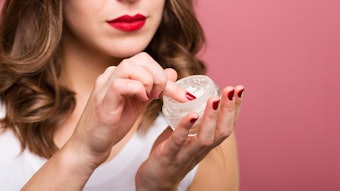
According to recent canons of beauty, skin touched by the sun signifies a healthy lifestyle and wellness. Unfortunately, apart from the (hopefully) desired skin tone, exposure or excessive and prolonged exposure to UV radiation brings a whole range of undesired consequences. UV radiation induces degenerative changes in skin cells, fibrous tissue and blood vessels, leading to premature skin aging.1
UV exposure aside, skin aging is an unavoidable, complex biological and psychological process. Genetic changes in the activity of cells occur, such as slowed regeneration processes, weakening of natural resistance and a reduced ability to adapt and respond to environmental stress. These changes make the human organism more susceptible to damage or disease.2, 3
Taken together, skin makes an excellent model to study the process of aging. It is exposed directly to the destructive effects of the elements and hence is more prone to aging than other organs of the body—and understanding the mechanisms of aging is vital for developing methods that delay this process.
In relation, recent interest has grown in oxidation processes related to aging as well as other diseases, especially since the intensity of these processes increases with age. As such, carotenoids, which are some of the best-known natural antioxidants, have been the subject of studies for years, both for cosmetic and health benefits. Here, an overview of the causes of aging and photoaging is given, followed by a review of carotenoids and their functions to benefit cosmetics.
Causes of Skin Aging
As stated, skin aging is a multifactorial process controlled both by genetic and environmental factors. From a genetic standpoint, it is controlled by the complex of genes responsible for cell division, antioxidative DNA repair and immunological protection.4-7 The types of skin aging processes generally can be grouped as follows (see Figure 1):
1. intrinsic;
2. chronological, hormonal (related to menopause) and age mimicry;
3. extrinsic or photoaging controlled by external factors; and
4. UV-induced photoaging related to excessive UV exposure.1
UV Radiation: A Spectrum of Effects
Photoaging caused by UV exposure can be likened to the process of gradual wound healing or cicatrization, which is intensified by other environmental factors such as smoking, air pollution, a lack of sleep, improper diet, hormonal agents and diseases. The full spectrum of electromagnetic radiation includes infrared, at wavelengths longer than 800 nm; visible light, in the range 400-800 nm; and UV, which is divided into three subranges denoted as UVC, UVB and UVA.
UVC: Under normal circumstances, UVC radiation, at wavelengths from 100-290 nm, do not reach the earth’s surface as they are almost entirely absorbed by the ozone layer. Radiation in this range is responsible for damaging the cornea of the eye and causing erythema. On the up side, it has bactericidal properties.
UVB and UVA: UVB radiation, at wavelengths from 290-320 nm, causes sunburn; UVA, from 320-400 nm, is responsible for immediate skin coloration and delayed reactions. Within UVA are two subranges, UVA1 (340-400 nm) and UVA2 (320-340 nm), which are responsible for erythema and coloration.
UVA accounts for 90-95% of radiation that reaches the earth8-11 and about 50% of it penetrates through the reticular and papillary layers of dermis. In contrast, 90% of UVB is absorbed by the corneal layer of the epidermis.5
Biological effects: The biological effects of UV irradiation on the skin depend on the intensity and wavelength. Early reactions include erythema and sunburn while delayed effects relate to damage on a molecular level such as changes in pigmentation and the development of precancerous lesions and tumors.12-14
The clinical image of prematurely aged skin includes wrinkles and coarse skin; over-drying; abnormal keratinocyte maturation; discolored, mottled hyperpigmentation; telangiectasia with hypertrophic solar keratosis and seborrheic keratosis; and reduced skin elasticity.15 UVA enhances the effect of UVB in the epidermis and damages the connective tissue.5, 7 Further, UVA disturbs microcirculation in the dermis and causes angiogenesis and a fragmentation of elastic fibers.16
The antioxidant activity of carotenoids is based on their ability to quench oxygen in its singlet state.
Carotenoid Characteristics
Carotenoids, which as stated, are some of the best-known natural antioxidants, have been the subject of studies for many years.17, 18 So far, more than 700 carotenoids have been identified, 60 of which are found in the everyday diet, and 20 that can be detected in the blood.19
Carotenoids are the natural yellow, orange, red or sometimes violet dyes found in plants. They occur together with chlorophyll in chloroplasts or separately in chromoplasts. They are responsible for coloring the different parts of plants, usually flowers and fruits; rarely roots. Chlorophyll decomposes faster than carotene, leaving carotenoids behind in aging leaves. This is what causes the characteristic autumn color-change.20
Carotenoids contain 11 coupled double bonds, so they can be classified as polyisoprenoids. They are weakly polar and can be found in acyclic, monocyclic or bicyclic form.21 In contrast to plants, animals are not able to synthesize carotenoids via biochemical processes, so these substances must be provided through dietary sources.22
Carotenes: Carotenes are the orange dye sub-group of carotenoids. Their main representatives are α-, β- and γ-carotene. In the presence of carotenase, α- and γ-carotene are transformed into one molecule of vitamin A, while β-carotene is transformed in two molecules of vitamin A and lycopene, found in tomatoes;17, 18 although not all carotenoids are precursors of vitamin A.
A proper intake of β- and α-carotene prevents vitamin A insufficiency and the health problems related to it; for example, vitamin A assists in the regeneration of tissues, and prevents degeneration of the epithelium lining the alimentary tract mucosa, lacrimal glands and salivary glands, as well as urinary tracts.23 However, to become active, these carotenes must be converted to retinol. While almost half of absorbed carotenes undergo this conversion, only 15% of them are used by the human organism.23
Xanthophylls: Xanthophylls are the yellow or yellow-orange dye sub-group of carotenoids. They are widespread in lower and higher plants. Chemically, xanthophylls are tetraterpenes of much greater structural diversity than carotenes. Examples include capsorubin and capsanthin, the main dyes in mature paprika fruit and fucoxanthin, which occurs in diatoms and brown algae in such large amounts that it masks chlorophyll and dyes chromatophores brown.
Antioxidant Activity
Carotenes and xanthophylls can protect against the negative effects of excessive sunlight24 due to their antioxidant properties, capturing free oxygen radicals and effectively scavenging peroxyl radicals. Examples include: zeaxanthin, present in maize, Rosa canina and common seabuckthorn; crocetin, present in the flowers of verbascum and in saffron; cryptoxanthin, occurring in citrus fruits; and lutein, in algae, spinach, savoy cabbage maize and broccoli. Neoxanthin, present in spinach, not only inhibits the production of peroxides, but also prevents the attachment of the chemical carcinogen DMBA to DNA, inhibiting carcinogensis upon initiation and post-initiation.25
The antioxidant activity of carotenoids is based on their ability to quench oxygen in its singlet state, transitioning it to a lower energy.26 This is possible thanks to their conjugated double bonds, which absorb light. Some carotenoids also contain a cyclohexane ring with hydroxyl substituents or ketone groups; e.g., in cantaxanthin or astaxanthin. In the case of astaxanthin, it is a more effective free radical scavenger than b-carotene due to its ketone group, which induces great changes in electron density near the ends of the polyene chain of the molecule. This helps to stabilize the molecule after transitioning to a radical state.
Carotenoids also are capable of terminating chain reactions,27 which most likely occurs via attachment of the peroxyl lipid radical to the conjugated chain of the carotenoid molecule. This leads to the formation of carotenoid free radicals but under low oxygen pressure, the radical can attach one more peroxyl lipid radical, transforming it to an inactive product. Under high oxygen pressure, however, rather than a termination process, the carotenoid radical reacts with oxygen, forming a carotenoid peroxyl radical; thus, it behaves as an oxidant.28
Skin Care Benefits
As natural antioxidants, carotenoids impart various benefits in cosmetics.
Anti-aging and skin repair: Carotenoids have been shown to stimulate fibroblasts to synthesize collagen and elastin, smoothing deep wrinkles and crow’s feet around the eyes, and mimic wrinkles. They also increase skin density, elasticity and firmness.29
Carotenoids repair and regenerate collagen and elastin fibers damaged by UV radiation, restoring and improving skin thickness.30 In conjunction, they can strongly inhibit the activity of elastase, which degrades collagen and elastin. In doing so, they protect the skin against further loss of firmness and premature wrinkles.31
Further, they stimulate and normalize the process of epidermal regeneration after keratinization and UV damage, making skin smooth and soft. They also enhance the protective effect of the epidermis by reducing TEWL, correcting hydration for smooth, firm and elastic skin.32
By protecting the skin against damaging free radicals, carotenoids also prevent the degradation of collagen, elastin and fibrillin.29 At the same time, they stimulate natural mechanisms that protect the skin against UV radiation, enhancing skin’s resistance and support healing processes. Finally, they normalize the work of sebaceous glands, improving lipid management for dry or oily skin.31
Depigmenting activity: In a different capacity, carotenoids are capable of significantly decreasing the size of melanocytes and melanin levels. This, in turn, reduces undesired discoloration caused by UV radiation, hormones or inflammatory conditions such as acne.
Anti-acne properties: Finally, perhaps a less obvious benefit of carotenoids and their free radical-scavenging ability is the protection they provide to lipid components in sebum. This prevents the generation of irritating and inflammatory products that lead to acne.33
Carotenoids also normalize the work of sebaceous glands, reducing the oils on skin and reducing the tendency to form comedones and eczema.34
In relation, carotenoids clean the outlets of the hair follicle, which leads to a narrowing of skin pores.35 They can also regulate and accelerate epidermis exfoliation, preventing the appearance of new acne changes.33-36
Astaxanthin is an effective UV absorber that protects against erythema and photoaging.
Carotenoids in Cosmetics
Examples of the carotenoids most commonly used in cosmetics are characterized here.
β-Carotene: β-carotene often is used for the treatment of photosensitivity in patients with the metabolic condition protoporphyria. It alleviates symptoms of acute or chronic photodamage36 and can regulate sebum secretion. It shows anti-acne activity, softens the epidermis, imparts anti-aging properties and reduces the effects of photoaging including excessive keratinization.37
The administration of 30 mg of β-carotene per day for 10 weeks enhances yellow coloration in the skin all over the body and reduces erythema. In relation, preparations have been developed including β-carotene for use prior to sun exposure. These reduce the risk of sunburn due to a decrease in the sunlight absorbed into skin.38, 39
Lutein and zeaxanthin: Lutein and zeaxanthin also protect the skin against premature aging stimulated by UV exposure. They are capable of neutralizing the triplet states of photosensitizers and singlet states of oxygen, and act as antioxidants toward the reactive forms of oxygen and nitrogen. Moreover, lutein and zeaxanthin absorb blue light, which is considered more damaging than UV radiation, and eliminate the effect of greying in skin. They are recommended for aging, wrinkled skin.40
Lycopene: Lycopene is used in creams to protect against UV radiation, and revitalize and regenerate skin cells. Lycopene has many skin benefits. It helps to maintain skin density and firmness; is involved in the synthesis of procollagen, the precursor of collagen responsible for skin elasticity; and protects hyaluronic acid against decomposition.
Extracts from tomatoes are applied in creams to treat dry, grey and tired skin. They are also used to cleanse oily skin.41, 42
Astaxanthin: Astaxanthin is an effective UV absorber, so it protects against erythema, photoaging and changes in DNA induced by free radicals. It is a popular ingredient in creams with UV filters. Astaxanthin slows oxidizing processes that destroy lipids and phospholipid cell membranes, therefore it is recommended not just for facial skin, but the whole body. It protects collagen against decomposition and hence prevents the appearance of wrinkles. It also reduces the content of melanin in skin, decreasing the appearance of freckles, melasma and other discolorations, while endowing the skin with a homogeneous color.43-45
Formulating Considerations
It is worth noting that while they impart a multitude of skin care benefits, carotenoids afford the opportunity for further esthetic development. As dermatologist Z.D. Draelos, M.D., explains, topically, carotenoids can be difficult to formulate with since they impart their characteristic color to products.46
However, some colorless carotenoids have been developed; by removing one double bond, their color is decreased, in turn improving esthetics.46 According to the patent literature, another approach is to complex them; β-carotene complexed with cyclodextrin, for example, exhibited reduced color intensity and its color shifted toward a neutral pinkish beige, which is more cosmetically acceptable.47
Conclusions
High concentrations of carotenoids in the skin are related to a stress-free lifestyle, supplemented with carotenoid-rich foods and other products. While the kinetics of carotenoid degradation are fast, on the order of a few hours, the regeneration of skin takes at least a few days. So protecting skin against oxidative stress is important and may be alleviated by topical cosmetic products that are rich in carotenoids.48 As such, it comes as no surprise that carotenoids have gained considerable interest from the cosmetics industry, and that many labs are working on ways to optimize and apply the multiple beneficial properties of these plant dyes.
References
- B Zegarska and M Wozniak, Przyczyny wewna¸trzpochodnego starzenia się skóry, Gerontologia Polska 14 153-159 (2006)
- J Batko, Mechanizm procesu starzenia się, Nasza droga do kosmetologii, WSZPZiUP 2 209-15 (2005)
- M Kopczewska and B Kopczewski, Apoptoza-genetycznie zaprogramowana smierc komórki, Nowiny Lekarskie 73 389-92 (2005)
- K Olek-Hrab, A Hawrylak and M Czarnecka-Operacz, Wybrane zagadnienia z zakresu starzenia się skóry, Postęp Derm i Alergol 5 226-234 (2008)
- A Rouger A (1990) Czy promieniowanie UV jest niebezpiecz-ne? Postęp Derm i Alergol 7 351-357 (1990)
- M Mossakowska, A Więcek and P Błędowski, Aspekty medyczne, psychologiczne, socjologiczne i ekonomiczne starzenia się ludzi w Polsce, Termedia Wydawnictwo Medyczne, Pozna´n (2006)
- M Ramos-e-Silva and S Coelho da Silca Carneiro, Elderly skin and its rejuvenation: Products and procedures for the aging skin, IACD 6 40-50 (2006)
- TM Callaghan and KP Wilhelm, A review of aging and an examination of clinical methods in the assessment of aging skin. Part I: Cellular and molecular perspectives of skin ageing, Int J Cosmetic Sci 30 313-322 (2008)
- A Augustyniak and E Skrzydlewska, Zdolnosci antyoksydacyjne w starzeja¸cym się organizmie, Postępy Hig Med Dosw 58 194-201 (2004)
- M Yaar and BA Gilchrest, Skin aging: Postulated mechanisms and consequent changes in structure and function, Clin Geriatr Med 17 617-630 (2001)
- A Gosain and L DiPietro, Aging and wound healing, World J Surg 28 321-326 (2004)
- B .Zakowska-Wachelko and W Pędich, Pacjenci w starszym wieku, PZWL, Warszawa (1995)
- A Gilhar et al, Aging of human epidermis: The role of apoptosis. Fas and telomerase. Br J Dermatol 150 56-63 (2004)
- W Dean and RF Morgan, In defense of the concept of biological aging measurement: Current status, Arch Gerontol Geriatr 7 191-210 (1998)
- PU Giacomoni and G Rein, A mechanistic model for the aging ofhuman skin, Micron 35 179-184 (2004)
- CE Yu et al, Positional cloning of the Werner’s syndrome gene, Science 272 258-262 (1996)
- R Baran and HI Maibach, Textbook of Cosmetic Dermatology, London (1998)
- A Gryszczynska, B Gryszczy´nska and B Opala, Karotenoidy. Naturalne zródła, biosynteza, wpływ na organizm ludzki. Postęp Fitote 2 127-143 (2002)
- SC Andersson, Carotenoids, tocochromanols and chlorophylls in seabuckthorn berries and rose hips, Doctoral Thesis Swedish University of Agricultural Sciences, Alnarp (2009)
- FA Juola, K McGraw and DC Dearborn, Carotenoids and throut pouch coloration in the great fregatebird, Comp Biochem Physiol 149 370-7 (2008)
- A Fratianni, L Cinquanta and G Panfili, Degradation of carotenoids in orange juice during microwave heating, Food SciTechnol 43 71-867 (2010)
- A Geens, T Dauwe and M Eans, Does antropogenicmetal pollution affect carotenoids coloration, antioxidative capacity and physiological condition of great tits, Comp Biochem Physiol 63 150-155 (2009)
- ChL Rock, Carotenoids, biology and treatment, Pharmacol Ther 3 185-197 (2011); and H Rock, Ch L Braun and H Ernst, The chemistry of novel xanthophyll carotenoids, The American J Cardiology 10 51-57 (2007)
- E Christaki, E Bonos, I Giannenas and P Florou-Paneri, Functional properties of carotenoids originating from algae, J Sci Food Agric 93 5-11 (2013)
- A Iturriga, A Velayos and AP Eslava, Structure and function of the genes involved in the biosynthesis of carotenoids in the mucorales, Biotechnol Bioprocess Eng 5 263-274 (2000)
- A Rodríguez-Bernaldo de Quirós and HS Costa, Analysis of carotenoids in vegetable and plasma samples: A review, J Food Compos Anal 19 97-111 (2006)
- M Sikora, Karotenoidy, wielofunkcyjne składniki preparatów kosmetycznych, Magazyn Partnerów Polskiej Grupy Farmaceutycznej „Bez Recepty” 5 17-19 (2005)
- S Rivera and R Canela-Garayoa, Analytical tools for the analysis of carotenoids in diverse materials, J Chromatography A 1224 1-10 (2012)
- TP Anunciato and PA Filho de Rocha, Carotenoids and polyphenols in nutricosmetics, nutraceuticals and cosmeceuticals, J Cosm Derm 11 51-54 (2012)
- R Ganceviviere, A Liakou, A Theodoridis and E Makrantonaki, Skin anti-aging strategies, DermatoEndocrinol 3 308-319 (2012)
- GJ Fisher, The pathophysiology of photoaging of the skin, Cutis 5 58–69 (2005)
- KP Wilhelm, AB Cua and HI Maibach, Skin aging effect on transepidermal water loss, stratum corneum hydration, skin surface pH and casual sebum content, Arch Derm 12 1806-1809 (1991)
- L Invidia et al, Human models of aging and longevity, Expert Opin Biol The 8 1393–405 (2008)
- RM Han, JP Zhang and LH Skibsted, Reaction dynamics of flavonoids and carotenoids as antioxidants, Molecules 17 2140-2160 (2012)
- C Rice-Evans, N Miller and G Paganga, Antioxidant properties of phenolic compounds, Trends Plant Sci 2 152-159 (1997)
- J Igielska-Kalwat, A Wawrzynczak and I Nowak, Karotenoidy i ich zastosowanie w przemy´sle kosmetycznym, Chemik 2 140-144 (2012)
- K Staniszek and A Gozdzicka-Józefiak, Wpływ β-karotenu, retinoidów i receptorów retinoidowych na proliferację i transformację nowotworowa¸ komórek, Biotechnologia 3 28-45 (2008)
- W Ma¸czka and K Winska, β-Karoten—przyjaciel czy wróg? Postępy Kosmetologii 4 259-262 (2011)
- H Bojarowicz and A Płowiec, Wpływ witaminy A na kondycję skóry, Prob Hig Epidemiol 91 352-356 (2010)
- P Morganti, D Martins and G Morganti, Aktywnos c luteiny w skórze, SÖFW 1 13-18 (2012)
- E Darvin, W Sterry, J Lademann and T Vergou, The role of carotenoids in human skin, Molecules 16 10491-10506 (2011)
- J Igielska-Kalwat, J Goscianska and I Nowak, Zastosowanie likopenu w dermo kosmetykach, Przemysł Chemiczny 7 1110-1130 (2014)
- K Arakane, Superior skin protection via astaxanthin, KOSE Corp R&D (2010)
- B Capelli, GR przy współpracy dr Cysewskiego, Astaksantyna. Naturalna astaksantyna-królowa karotenoidów. Cyanotech Corp (2007)
- J Igielska-Kalwat, J Goscianska and I Nowak, Astaksantyna cenny składnik preparatów kosmetycznych, Kosmet Estet 2: 83-85 (2013)
- www.zoedraelos.com/articles/diet/ (Accessed Mar 14, 2017)
- https://www.google.com/patents/US5834445 (Accessed Mar 14, 2017)
- R Alvarez, B Vaz, H Gronemeyer and AG de Lera, Functions, therapeutic applications and synthesis of retinoids and carotenoids, Chem Rev; dx.doi.org/10.1021/cr400126u (2014)











